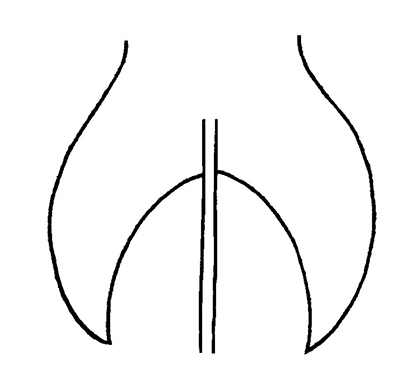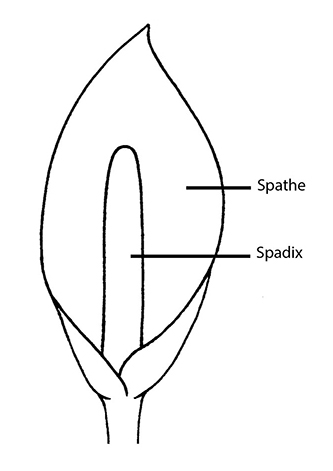Cyrtosperma Griffith
none
Araceae
southeast Asia and Oceania
Cyrtosperma johnstonii (N.E. Br.) N.E. Br.
C. merkusii (Hassk.) Schott
none
not weedy
large emergentemergent:
(adj) (syn. emersed) with parts raised out of the water; extending up out of the water
plant in shallow water
Perennial. Up to 4 m tall on short, tuberous rhizomerhizome:
(n) an underground stem, usually growing horizontally, from which both roots and shoots emerge directly; the thick, above-ground stem of ferns
 . Leaves in apicalapical:
. Leaves in apicalapical:
(adj) of the apex
rosetterosette:
(n) a radiating cluster of leaves, usually close to the ground at the base of a plant
 ; petioles elongate (up to 3 m), densely warty or spiny; leaf bladeblade:
; petioles elongate (up to 3 m), densely warty or spiny; leaf bladeblade:
(n) (syn. lamina) the flat, expanded part of a leaf, frond, or petal (excluding, e.g., the petiole)
 very large, strongly sagittatesagittate:
very large, strongly sagittatesagittate:
(adj) shaped like an arrowhead , without spines, venationvenation:
, without spines, venationvenation:
(n) the arrangement of veins in a leaf
palmate. Inflorescenceinflorescence:
(n) the arrangement of flowers on the floral axis
 a spadixspadix:
a spadixspadix:
(n) a spike of small flowers borne on a thick, fleshy axis
 subtended by an open spathespathe:
subtended by an open spathespathe:
(n) a large bract or bracts subtending and often enclosing an inflorescence
 ; pedunclepeduncle:
; pedunclepeduncle:
(n) the stalk of a flower cluster or inflorescence
spiny; spadixspadix:
(n) a spike of small flowers borne on a thick, fleshy axis
 shorter than spathespathe:
shorter than spathespathe:
(n) a large bract or bracts subtending and often enclosing an inflorescence
 . Flowers bisexualbisexual:
. Flowers bisexualbisexual:
(adj) having both male and female sexual reproductive structures on one individual or in one flower
. Fruit fleshy with numerous red berries. Dispersal by edible fruits.
swamps and shallow, still waters
A genus comprising 12 accepted species, of which only two are considered aquatic or bog plants. Cyrtosperma johnstonii is the most commonly cultivated species for ponds. Due to its large size, Cyrtosperma is not suitable for aquariums, and it is most commonly found as a tropical pond plant in botanical gardens. Cyrtosperma merkusii, also known as swamp taro, is used as an important food source that is similar to taro (Colocasia spp.) in western Pacific Islands. Swamp taro must be treated before it can be eaten.